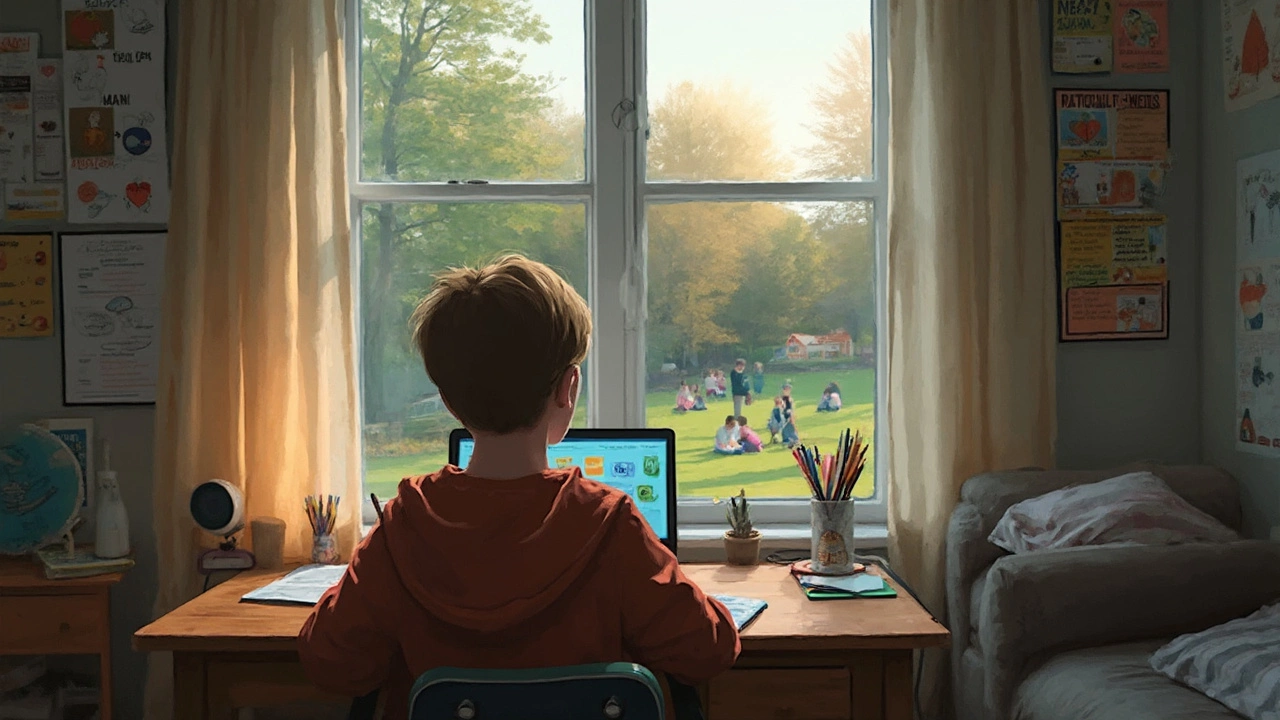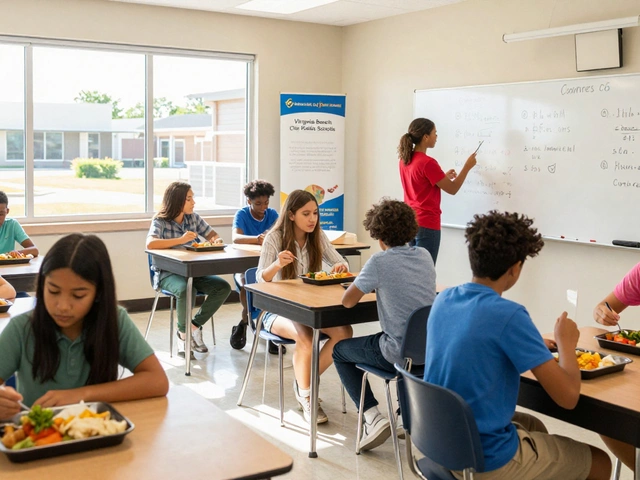Homeschooling gets a lot of hype these days — some folks see it as a cure for crowded classrooms and one-size-fits-all lessons. But if you’re weighing it for your own kid, there’s more to it than ditching the morning rush and dress codes. The truth? Homeschooling comes with its own set of headaches, and knowing them upfront can save you a lot of stress later.
For starters, kids who learn at home miss out on all those little moments that happen in halls and classrooms. Turns out, trading cafeteria food and group projects for kitchen tables and solo worksheets isn’t all upside. Think about field days, concerts, and silly inside jokes with friends — it’s not just “extra stuff.” These things help build confidence, teamwork, and, honestly, a lot of memories you can’t make on your own.
If you’re reading this because you’re thinking of homeschooling (or already knee-deep in lesson plans), you probably want honest feedback, not a guilt trip. Keep reading, because I’ll break down some of the most common downsides and give you some useful tips to deal with them. No fluff, just the real deal from a dad who’s seen behind the curtain.
- Missing the Classic School Experience
- Socialization: Not Just a Buzzword
- When Parents Become Teachers (and Everything Else)
- Finding Balance: Tips and Solutions
Missing the Classic School Experience
If you ask anyone about their school days, odds are they’ll mention more than what they learned in math or English. That’s because a huge part of the homeschooling debate is about what kids miss when they're not in a traditional classroom. We're not just talking about pep rallies or pizza day. We're talking about daily structure, real-world schedules, and those random lunchtime chats that turn into real friendships.
Here’s something a lot of folks overlook: schools create routines that help kids figure out how to manage their time. When you’re at home, it’s easy to blur the lines between “class” and “hanging out.” Without bells ringing and teachers keeping things on track, some students can struggle to focus or finish tasks on time.
Let’s get real for a second—school can be stressful and even boring sometimes, but it’s also where most kids learn to handle setbacks, stick to deadlines, and work out problems with peers. These moments can build resilience and independence. In a distance learning setup at home, those challenges might get replaced by a parent stepping in to fix things too soon, even without meaning to.
And of course, there are the life skills that only get taught outside of textbooks. Little stuff like remembering to bring supplies, dealing with tricky classmates, or speaking up in front of a group. Regular school, love it or hate it, is one long crash course in “people skills.”
- Team sports, clubs, and art shows offer natural ways to try new things and fail safely.
- Events like field trips or science fairs teach kids how to navigate the real world—buses, deadlines, teamwork, and even losing graciously.
- Learning from different adults (not just parents) means more feedback and different points of view.
One nationwide survey showed that nearly 70% of adults said their best friends came from their school years. That doesn’t mean homeschooled kids won’t make friends, but the path is usually less crowded and more complicated. That’s a real trade-off when weighing the potential downsides of homeschooling.
Socialization: Not Just a Buzzword
When you think about homeschooling, maybe the first thing you picture is a kid learning algebra at the kitchen table. But there’s a whole other piece — how kids actually interact with other people their age. Socialization isn’t just some tired talking point from critics; it’s a real thing with lasting effects.
Here’s what most folks don’t realize: a big chunk of stuff learned at school has nothing to do with books. Public and private schools are wild training grounds for life skills — like figuring out group work, navigating drama, or practicing patience when lunch lines move at a snail’s pace. A 2023 survey from the National Home Education Research Institute found that 54% of homeschooling parents worry their kids don’t get enough of this social practice. That’s a serious chunk of families scratching their heads about ways to fill in the gaps.
Are homeschooled kids doomed to be hermits? Absolutely not. But unless you put in extra effort, they can end up on the outside of a lot of kid-to-kid action. They don’t bump into classmates in gym, don’t have a bus ride to talk about Roblox wins, don’t swap snacks with anyone except maybe a little sibling (who, let’s face it, probably steals all the good stuff).
If you’re taking the distance learning route, here’s what you can actually do to help your kid not feel left out:
- Sign up for local co-op classes or activity groups. These are organized by other homeschooling families and offer things like science labs, sports, art, or just good old recess.
- Try sports teams or theater groups that don’t require a school ID. Many city rec leagues and community centers welcome anyone.
- Make library days a habit. Lots of libraries run clubs and project sessions for kids of all ages.
- Set up regular park days with other homeschool families. Even a couple of hours a week can go a long way.
Don’t expect your kid to just “make friends” on their own. It’s not always easy or automatic. You might need to nudge things along, offer rides, and schedule some meetups until routines click. Social skills don’t just show up — they’re learned one awkward handshake or group game at a time.

When Parents Become Teachers (and Everything Else)
Deciding to take the homeschooling route means you’re not just a parent anymore — suddenly, you’re a math teacher, librarian, science coach, counselor, and sometimes even the cafeteria lady. The shift is a lot and it hits fast. The toughest part? Most parents don’t have a background in education, which means you’re learning how to teach while actually teaching. Imagine explaining long division before you’ve had your first coffee. Sound familiar?
This is where burnout creeps in. A study from the National Home Education Research Institute found that over 60% of homeschooling parents admit they've felt overwhelmed at least once a week. Balancing lesson planning, actual teaching, grading, and family life is no small feat. Plus, if you’re also working from home or handling other family jobs, those roles can clash. You might feel guilty for not having Pinterest-worthy science experiments, or worry you’re not giving enough attention to another child.
The sheer variety of subjects is another curveball. You could love teaching reading but dread tackling chemistry or algebra. Sure, there are tons of resources online and even boxed curriculum kits. But finding quality materials that match your kid’s learning style takes time (and money). If your child has special learning needs, it’s even trickier. You can’t just call a guidance counselor or a specialist into your living room.
Here’s a quick look at how your daily load might stack up if you’re taking on distance learning at home:
| Task | Average Hours/Week |
|---|---|
| Lesson Planning | 4-7 |
| Teaching/Guided Learning | 15-25 |
| Grading/Assessment | 2-4 |
| Extracurricular Activities | 2-6 |
| Research & Resource Gathering | 1-3 |
Before you panic, lots of families get creative to share the load. Some join local homeschool groups where parents swap teaching roles or organize group science experiments. Signing up for online classes in the tougher subjects can also save your sanity (and possibly your relationship with fractions).
Tip: Don’t try to do it all yourself. Reach out to other families, check for community classes, and look into co-ops or virtual tutors. Sometimes, the best way to be a great homeschool parent is knowing when to call in backup.
Finding Balance: Tips and Solutions
If you’re deep into homeschooling and starting to feel like things are slipping — either you’re burning out or the kids are missing more than just crowded hallways — you’re definitely not alone. More than half of parents say they hit a breaking point at some stage, according to a 2023 national survey by EdChoice. So here’s the trick: don’t go solo, and don’t try to copy traditional education at home minute-for-minute. Flexibility really is your best friend.
First, check out local homeschooling support groups. Most areas — even small towns — now have at least one network for parents and kids. These groups offer shared classes, field trips, and even social events like park days where your child can hang with peers. You can find these on Facebook, Meetup, or through community centers. Some families see a boost in their kids’ social skills just by adding two group meet-ups a month to their schedule.
Feeling overwhelmed by lesson planning? You don’t have to reinvent the wheel. Tons of ready-made online curriculums exist. Sites like Outschool and Khan Academy let you plug in and go, with adjustable levels and pacing. This gives you breathing room, especially if you’re working remotely or juggling younger kids at the same time.
To keep your own sanity, set real boundaries between parent time and teacher time. Just because school happens in the kitchen doesn’t mean it has to bleed into every hour. Try time blocks — for example:
- 9-11am: Core subjects (math, reading, science)
- 11am-noon: Break for lunch and play
- Noon-2pm: Project work, art, or outside time
- After 2pm: Chores or personal downtime
And don’t forget about free resources. The local library is still a goldmine — story hours, science kits, even 3D printers in some spots. Taking advantage of these can spice up your routine and keep lessons fresh without blowing the budget.
If you’re worried about your kids’ social growth, sports leagues and after-school clubs are an easy fix. Even two or three weekly distance learning hangouts with other families go a long way. According to the National Home Education Research Institute, homeschooled students who participate in group activities match or beat their public school peers in social development — so yes, it really works.
Sometimes life happens and you need backup. If you get sick or work picks up, don’t be afraid to call on family, friends, or even digital tutors. It’s not “cheating” — it’s smart planning.
It’s easy to feel like you need to do everything, but asking for help and outsourcing when you can makes homeschooling way more sustainable. The mix of support, a little structure, and outside-the-home experiences covers the biggest gaps for both kids and parents.






